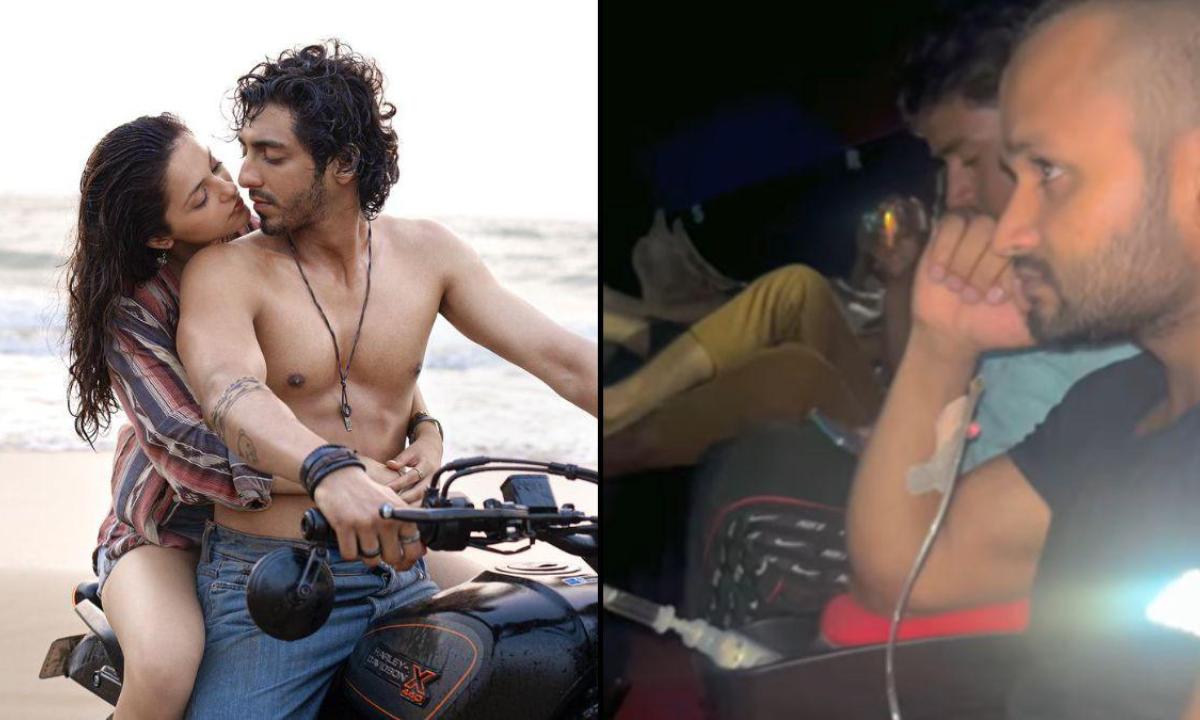
In a world where films are usually promoted with hashtags, press tours and non-stop interviews, Saiyaara decided to go in a completely different direction. Instead of shouting for attention, it stayed mostly silent. And strangely enough, that silence worked, at least in the beginning.
This blog breaks down Saiyaara’s PR journey: how the team behind the film created buzz without doing the usual things, why Gen Z couldn’t stop talking about it and how something so fresh and emotional slowly turned into something people started laughing at.
It’s a case study in both what to do right and when to stop.
Table of contents
- Saiyaara: a quick movie summary
- A quiet launch in the loud industry
- Letting Curiosity Do the Work
- From Buzz to Backlash: When Hype Turns Cringe
- The Role of Social Media: Subtle but Strategic
- Was This All Calculated? Or Did It Go Too Far?
- All That Hype, Did It Work?
- Final Thoughts
- FAQs
Saiyaara: A Quick Movie Summary
Saiyaara is a romantic drama that centres around two emotionally scarred individuals who cross paths in a Himalayan town. The film explores themes of grief, longing, and emotional rebirth. Told through a slow-paced, almost meditative style, the narrative focuses more on mood than action. The lead character, played by Ahaan Panday, is a singer, while the female lead is recovering from a personal tragedy. Their unspoken connection, set against snow-draped backdrops and minimal dialogue, creates a quiet storm of emotion. The movie is more of a sensory experience than a plot-heavy tale, relying heavily on visual cues, music and internal monologues.
A Quiet Launch in a Loud Industry
Most Bollywood films today follow a set routine: song launches, talk shows, teaser reveals, influencer shout-outs, airport looks and, of course, the lead actors giving round after round of interviews where everyone insists this is “not just another love story”. It’s a formula. One we’ve all seen before.
But Saiyaara? It tore up that rulebook.
There were no flashy hoardings on every other flyover. No city tours. No dance reality show appearances. No Karan Johar-style chat show confessions. Even Instagram timelines remained strangely silent. The film’s leads, Ahaan Panday and the rest of the cast, were almost invisible during the pre-release phase. For a debut film, especially one coming from a production giant like YRF, this was shocking.
Even the production house, known for tightly managed marketing campaigns, didn’t drop the usual behind-the-scenes videos, teaser countdowns or influencer collaborations. The buzz wasn’t engineered; it felt like it bubbled up from somewhere deeper. That gave it an edge because the lack of noise became the noise.
And perhaps the boldest move of all? There was no ‘launch event’. No red carpet moment with cameras flashing, no glittering guest list. They chose not to make a scene. It was minimalism, but deliberate.
Instead of traditional PR, Saiyaara leaned into a more emotional, intimate approach. It relied on cinematic mood. The trailer wasn’t loud; it was soft, melancholic and poetic. The visuals spoke of longing, the soundtrack whispered heartache and suddenly, without a single actor screaming “coming soon!”, people started to care.
Letting Curiosity Do the Work
Because there was no overload of pre-release content, no aggressive reminders, countdowns or constant hashtags, people naturally got curious. And in the age of short attention spans, that’s saying something.
Questions started popping up across social media:
“Who’s Ahaan Panday again?”
“Isn’t he related to Chunky Panday?”
“Why is this trailer giving me Rockstar vibes?”
“Did YRF seriously do zero PR?”
What Saiyaara did so cleverly was let the audience lean in, rather than forcing them to look. There was no spoon-feeding, no “look at me” energy. And that kind of curiosity is gold in today’s saturated content world. Because when people find something on their own, they feel like they discovered it and that makes them more likely to care, share and defend it.
It helped that the trailer itself wasn’t packed with drama or plot reveals. Instead, it gave us slow shots, moody lighting and emotional music, just enough to pull at your heart without giving too much away. It felt like watching a feeling, not a story. That left room for imagination and suddenly, everyone was trying to decode what the film was about.
Even people who don’t usually watch sad romantic dramas were talking about it. Why? Because they weren’t being told it was a must-watch. They were given space to feel intrigued.
From Buzz to Backlash: When Hype Turns Cringe
At some point, the tide began to turn.
The same audience that praised the subtlety started calling it “pretentious”. Emotional montages became meme material. What once looked poetic began to feel parody-worthy.
Ahaan Panday, though earnest, was suddenly dubbed “Bollywood’s Sad Boy” across comment threads. Critics pointed out how the film’s raw emotion sometimes felt more like a brand aesthetic than honest storytelling.
And when Saiyaara finally released, the narrative shifted again.
While some viewers connected deeply with its emotional core, others felt underwhelmed. They expected something profound. What they got was a pretty but predictable heartbreak film. The gap between the build-up and the actual film became hard to ignore.
This is where “PR by no PR” gets tricky; if the movie doesn’t fully deliver, the mystery collapses into disappointment.
The Role of Social Media: Subtle but Strategic
View this post on Instagram
Though it avoided the usual promotion circuits, Saiyaara wasn’t entirely absent from social media; it just approached it differently.
Instead of high-budget collaborations or filter trends, the campaign leaned into mood-based storytelling. Visuals were soft, muted, almost dreamlike. Music reels with dialogues and poetic captions started popping up quietly.
The biggest win? User-generated content. People made edits. Some even made theories. And most of it felt authentic, not paid.
A few mysterious video drops, shot on handheld cams, featuring moments that felt real, blurred the line between fiction and reality. Was this clever PR or just raw emotion?
Turns out, it was both.
Still, some critics felt this approach was more about image crafting than storytelling. That it tried so hard to be “deep” that it came off too curated, too self-aware.
And honestly? They may have a point.
Was This All Calculated? Or Did It Go Too Far?
Looking back, it’s clear the campaign was carefully engineered to feel unengineered. It wasn’t accidental minimalism; it was smart branding.
YRF wanted to launch Ahaan Panday not just as an actor but as a mood. A vibe. Someone soft-spoken and poetic, not your average Bollywood star kid.
It worked, to an extent.
But the danger of crafting an identity so tightly around mystery and emotion is that if audiences don’t buy it, it quickly becomes cringe. Some critics even went as far as calling the film “a Tumblr post stretched into a 2-hour film”.
The truth? Saiyaara played a high-stakes PR game. And while it got the attention it craved, the actual conversation got more complex once the film was out.
All That Hype, Did It Work?
Despite its polarising reception, Saiyaara proved to be a box office success.
- The title track “Saiyaara”, composed by Tanishk Bagchi, reached #1 on Spotify’s Top 50 (India) and climbed to #4 globally, surpassing even international hits.
- The film reportedly grossed ₹400 crore (around $53 million USD) worldwide.
- It achieved the highest opening weekend for a film featuring newcomers in India.
- Sacnik.com reported that Saiyaara sold over 45,000 tickets in 24 hours across PVR, INOX and Cinepolis. On release day, this rose to 195,000 tickets.
- Including single screens, national pre-sales touched 380,000 tickets, a massive turnout for a debut cast.
These numbers show that while the campaign took a risk, it paid off, at least commercially.
Final Thoughts
So was Saiyaara a PR success?
Yes and no.
It broke the mould. It got people talking without shouting. It sparked curiosity in a world that’s usually too distracted to care. For a debut film, especially in a cutthroat industry, that’s an achievement.
But it also showed the limits of aesthetic marketing. You can sell a vibe. But the story still needs to deliver.
In the end, Saiyaara gave Bollywood an exciting new template but also a cautionary tale. Sometimes, the best kind of buzz is the one you don’t control.
But you’ve got to make sure the product holds up once the noise dies down.



